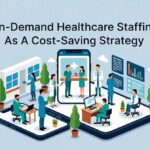In the healthcare industry, safeguarding patient data and ensuring regulatory compliance are of utmost importance. With the increasing need for digital health records and telemedicine, the complexity and importance of data security have grown exponentially. Identity and Access Management (also known as IAM) plays a critical role in protecting sensitive and confidential information and helping healthcare organizations comply with stringent regulatory requirements. This article explores the integral role of IAM in regulatory compliance and data protection within the healthcare sector.
Understanding What IAM Is
Identity and Access Management (IAM) comprises policies, processes, and technologies that businesses can use to manage digital identities and control access to resources. In healthcare, IAM ensures that only authorized personnel have access to sensitive patient information and critical systems, thereby protecting data integrity and confidentiality.
The Importance of Data Protection in Healthcare
Healthcare organizations handle an incredibly vast amount of sensitive data, including personal health information (PHI), which is protected under various regulations, including the Health Insurance Portability and Accountability Act (HIPAA) in the United States and in the European Union, the General Data Protection Regulation (GDPR). Protecting this data from security breaches and cyber-attacks is crucial for maintaining patient trust and complying with legal obligations.
The Role of IAM in Regulatory Compliance
1- Ensuring Data Confidentiality and Integrity
IAM solutions help healthcare organizations ensure that only authorized users have access to sensitive data. By implementing robust authentication mechanisms, IAM reduces the risk of unauthorized access. Furthermore, role-based access control (RBAC) ensures that users only have access to the information necessary for their job functions, minimizing the risk of data misuse.
2- Facilitating Compliance with HIPAA
HIPAA commands strict standards for the protection of PHI, including administrative, physical, and technical safeguards. IAM systems support compliance by providing:
– Access Controls: Restricting access to PHI to authorized individuals.
– Audit Trails: Recording access and modification of PHI, enabling organizations to monitor and review user activities.
– User Authentication: Ensuring that users are authenticated before accessing PHI.
By leveraging IAM, healthcare organizations can meet HIPAA requirements and avoid substantial fines and legal repercussions.
3- Supporting GDPR Compliance
GDPR imposes rigorous data protection standards on organizations handling the personal data of EU citizens. IAM aids compliance by:
– Ensuring Data Minimization: Limiting access to personal data to only those users who need it for legitimate purposes.
– Implementing Data Subject Rights: Enabling the identification and management of user access rights, including the right to be forgotten and data portability.
– Maintaining Data Security: Using encryption and secure access controls to protect personal data from any unauthorized access and breaches.
IAM solutions provide the necessary tools to comply with GDPR’s stringent data protection requirements, thereby safeguarding patient data and avoiding hefty penalties.
Enhancing Data Protection with IAM
1- Multi-Factor Authentication (MFA)
MFA significantly enhances security as it requires users to provide a number of forms of verification before accessing sensitive data. This layered approach reduces the risk of credential theft and unauthorized access, ensuring that only legitimate users can access critical systems and information.
2- Role-Based Access Control (RBAC)
RBAC assigns permissions based on user roles within the organization. This ensures that employees have access to the information they need to perform their duties while preventing unauthorized access to sensitive data. Regularly reviewing and updating roles and permissions helps maintain appropriate access controls.
3- Continuous Monitoring and Auditing
Continuous monitoring and auditing of user activities are essential for detecting and responding to security incidents. IAM systems provide detailed audit logs that track access to sensitive data and user actions. Regular audits help identify potential security gaps and ensure compliance with regulatory requirements.
4- Identity Lifecycle Management
Automating identity lifecycle management processes, such as provisioning, de-provisioning, and role changes, ensures that access rights are consistently managed. This reduces the risk of human error and ensures that users have appropriate access throughout their tenure with the organization. Promptly revoking access for terminated employees helps prevent unauthorized access to sensitive information.
Addressing Challenges in IAM Implementation
While IAM provides significant benefits, implementing and managing IAM systems can be challenging. Healthcare organizations may face issues such as:
– Integration with Legacy Systems: Ensuring compatibility between IAM solutions and existing systems can be complex. Investing in flexible IAM solutions that support integration with various platforms is essential.
– User Training and Awareness: Educating employees about IAM policies and best practices is crucial for effective implementation. Regular training sessions help staff understand the importance of data protection and comply with security protocols.
– Balancing Security and Usability: Striking a balance between robust security measures and user convenience is vital. Implementing user-friendly authentication methods, such as biometrics, can enhance security without compromising usability.
In Summary
In the healthcare sector, Identity and Access Management (IAM) is indispensable for protecting sensitive patient data and ensuring regulatory compliance. By implementing robust authentication mechanisms, role-based access control, and continuous monitoring, healthcare organizations can enhance data security and maintain compliance with regulations such as HIPAA and GDPR. Despite the challenges, the benefits of effective IAM in safeguarding patient information and supporting regulatory compliance far outweigh the difficulties.
Did you find this helpful? Check out our other helpful articles on our website.
Read Also
- Creative Approaches to Alleviating Healthcare Staff ShortagesHospitals and clinics are facing staff shortages, which makes it harder to take care of patients well. Finding simple and useful solutions is very important. Easy changes like flexible work hours, good training, and chances to grow can help staff stay happy. Technology, like online doctor visits and helpful tools, can make work easier. Smart… Read more: Creative Approaches to Alleviating Healthcare Staff Shortages
- Understanding the Role of Sterilizers in Healthcare FacilitiesHave you ever wondered how hospitals keep their equipment safe enough to use on dozens of patients every day? Most people never think about what happens behind the scenes, yet these hidden steps play a huge role in patient safety. Sterilizers are part of that system, working quietly to remove harmful germs before any instrument… Read more: Understanding the Role of Sterilizers in Healthcare Facilities
- Building Healthcare Access Where It’s Needed Most: A Local First ApproachHealthcare shouldn’t depend on where you live. But in the U.S., it often does. If you’re in a big city, you likely have options. If you’re in a small town or an underserved neighbourhood, it’s a different story. To fix this, more healthcare leaders are turning to a local-first approach. That means putting clinics and… Read more: Building Healthcare Access Where It’s Needed Most: A Local First Approach
- Revolutionizing Patient Engagement: Innovative Solutions for Improved Care and Treatment SuccessNavigating healthcare system can often feel overwhelming for patients. Between appointments, prescriptions, and treatment regimens, it’s easy for crucial details to get lost in the shuffle. That’s why effective patient engagement and support solutions are more important than ever. Companies like Serva Health, with their pharma hub services, are stepping up to ensure that patients… Read more: Revolutionizing Patient Engagement: Innovative Solutions for Improved Care and Treatment Success
- On-Demand Healthcare Staffing As A Cost-Saving StrategyThis is an exciting and challenging time for the healthcare industry. Technology is advancing almost faster than humans can keep pace. New legislation is creating fresh challenges for the future of healthcare, and the shifting population demographic continues to place more pressure on healthcare facilities. Amidst these changes, healthcare facilities are facing a critical staffing… Read more: On-Demand Healthcare Staffing As A Cost-Saving Strategy
- The Benefits of Contract Labor Staffing in HealthcareThe most successful healthcare facilities today aren’t just reacting to crises—they are building workforce resilience to withstand them. Unpredictable patient demand, coupled with persistent nursing shortages, has made the traditional staffing model obsolete. Relying on mandatory overtime to cover a sudden surge in capacity is a recipe for high turnover and rising employee burnout relief… Read more: The Benefits of Contract Labor Staffing in Healthcare
- Management Reinforcement for Healthcare Providers in a Shifting SystemHealthcare is changing faster than ever. So, providers are feeling the pressure to keep up. New technology, changing patient needs, and constant rule updates make it tough for managers to stay on top. Strong leadership helps teams work better, give great care, and stay happy in their jobs. Here’s how healthcare leaders can strengthen their… Read more: Management Reinforcement for Healthcare Providers in a Shifting System
- Why Effective Disinfection Remains the Foundation of Public HealthFrom hospitals and schools to transport hubs and food production sites, disinfection is central to breaking the chain of infection and protecting community health. The COVID-19 pandemic highlighted how crucial surface hygiene and environmental control are in reducing the spread of harmful microorganisms. Yet, beyond emergency response, routine and validated disinfection practices remain the cornerstone… Read more: Why Effective Disinfection Remains the Foundation of Public Health









